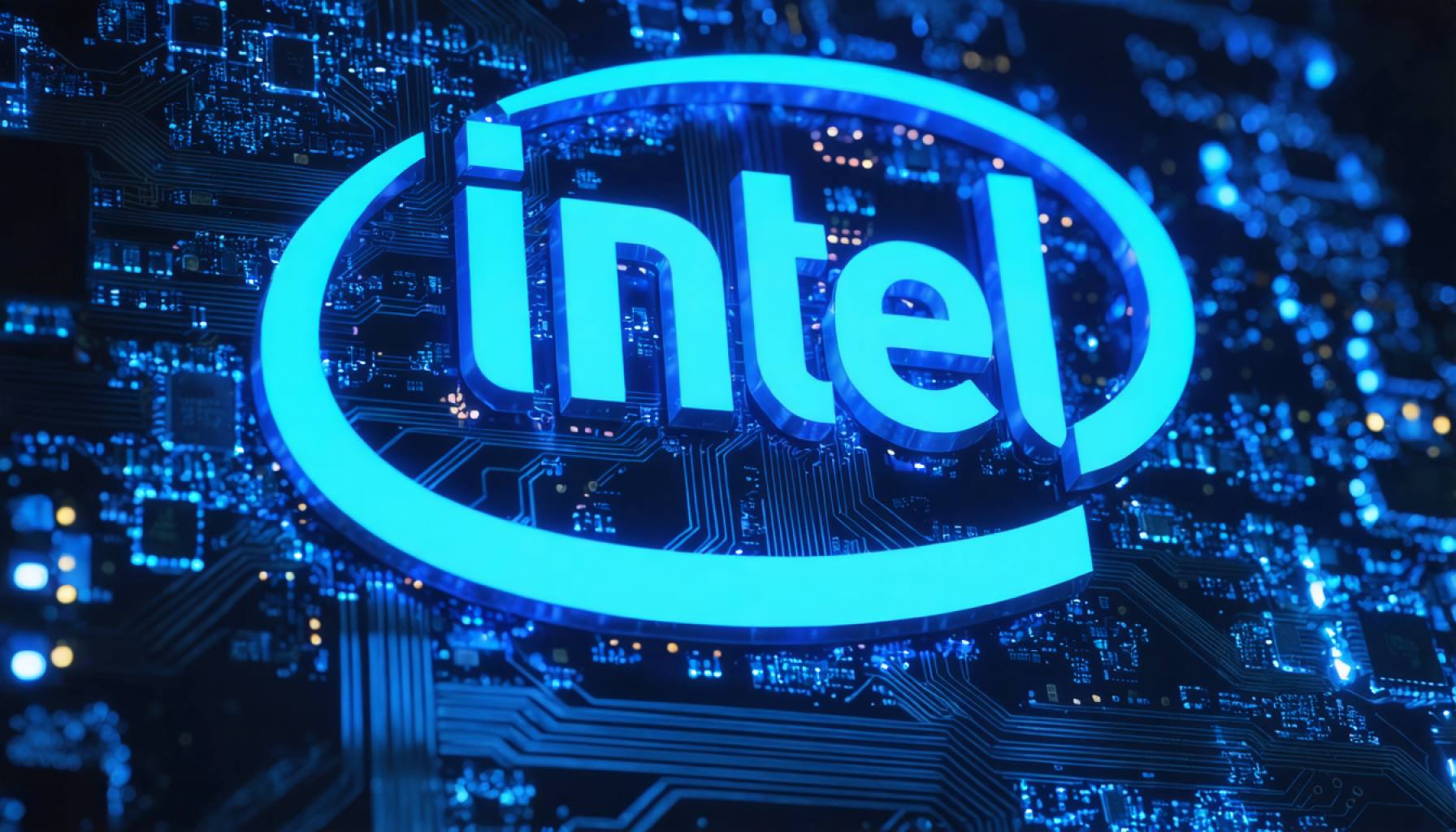- Intel’s stock experienced a significant rise, influenced by optimism over potential improvements in U.S.-China trade relations.
- U.S. Treasury Secretary Scott Bessent suggested a possible de-escalation in trade tensions, boosting investor confidence.
- Both the S&P 500 and Nasdaq Composite mirrored Intel’s upward trend, despite earlier stock price target reductions by analysts.
- Bernstein and Barclays lowered their price targets for Intel, citing trade-related concerns and valuation issues.
- Intel faces challenges with uneven demand forecasts and strategic management of its chip-design and foundry segments.
- Investors should remain vigilant as geopolitical shifts and Intel’s strategic decisions could lead to increased stock volatility.
A spirited uptick in Intel’s stock price swept through the markets, driven by emerging optimism over a potential thaw in the protracted U.S.-China trade conflict. Yesterday’s market sell-off was countered by a robust rally, reflecting broader gains in major indexes. Intel’s shares surged as much as 4.8% before settling at a 2.8% rise, alongside the S&P 500 and Nasdaq Composite, which climbed similarly.
In a dynamic dance between geopolitics and economics, the catalyst came from U.S. Treasury Secretary Scott Bessent. At a pivotal investor conference, Bessent unwound the narrative, hinting that the painstaking trade war between the world’s two largest economies might be poised for de-escalation. The possibility of a breakthrough—no matter how uncertain—rekindled investor confidence and carried Intel’s stock upward despite analysts casting a shadow earlier in the day with slashed price targets.
The backdrop to this market shift reveals a complex tableau. Both Bernstein and Barclays adjusted their perspectives on Intel, lowering price forecasts amid swirling concerns over tariff-induced headwinds and valuation skepticism tied to U.S.-China dynamics. Barclays adjusted its projection to $19 per share, while Bernstein set a slightly higher mark at $21, reflecting tempered expectations for Intel’s earning potential this year.
Amidst these adjustments, Intel grapples with an uneven demand forecast, questioning how it will navigate its chip-design initiatives and strategically manage its foundry segment, which has yet to provide tangible profit returns. The decision-making here could either ignite or dampen investor interest moving forward.
As Intel strides through these turbulent waters, the key takeaway for investors hinges on vigilance. The tide of trade negotiations could turn again at a moment’s notice, and with Intel’s varied pressures, volatility might be more a norm than an exception in the months ahead. In a world where market surges and slumps occur with headline speed, maintaining a careful watch on geopolitical shifts and Intel’s strategic responses will be imperative.
In summary, while current events hint at possible relief in trade tensions, Intel’s future remains etched in uncertainty—a blend of strategic anticipation and global economic whispers.
Unlocking Intel’s Future: Key Trends and Strategic Insights You Need to Know
Introduction
The recent rally in Intel’s stock highlights the company’s volatile position at the intersection of geopolitical tensions and technological innovation. While market optimism grows around a potential easing in U.S.-China trade conflicts, several critical questions about Intel’s strategic direction remain unanswered. This article explores Intel’s current challenges, future trends, and provides actionable insights for investors and industry watchers.
Intel’s Strategic Challenges and Industry Trends
1. U.S.-China Trade Dynamics: The potential de-escalation of the U.S.-China trade war is pivotal for Intel, given its substantial supply chain dependencies and market interests in Asia. The recent comments by U.S. Treasury Secretary Scott Bessent signal a possible thaw, yet the landscape remains fraught with uncertainty. Continued vigilance is necessary, as geopolitical shifts could influence stock performance dramatically.
2. Foundry Business: Intel’s foray into the semiconductor foundry business intends to compete against giants like TSMC and Samsung. However, despite strategic investments, Intel has yet to demonstrate significant profitability in this segment. As global demand for semiconductors rises, Intel’s ability to innovate and scale production efficiently will be crucial.
3. Market Forecast & Industry Trends: According to Gartner, the semiconductor industry is poised for growth, particularly in areas such as IoT, AI, and automotive sectors. Intel’s focus on enhancing its chip design for these domains could yield long-term benefits that offset short-term volatility caused by geopolitical factors.
4. Analyst Price Targets: The revised price targets by Bernstein and Barclays highlight potential headwinds due to valuation concerns. Investors should weigh these insights and consider how macroeconomic and industry-specific factors might impact these projections moving forward.
Pros & Cons of Investing in Intel
– Pros:
– Strong R&D capabilities aiming to capitalize on emerging tech trends.
– Potential benefits from easing trade tensions.
– Significant brand strength and market penetration.
– Cons:
– Exposure to geopolitical risks, particularly with China.
– Current challenges in the foundry sector that need resolution.
– Market skepticism about Intel’s ability to sustain profit margins amid evolving industry dynamics.
Actionable Recommendations
1. Diversification: Consider a diversified portfolio to mitigate risks associated with geopolitical uncertainties and sector-specific challenges.
2. Long-Term Outlook: For those with a long-term investment horizon, Intel’s strategic shifts towards burgeoning tech domains could present lucrative opportunities.
3. Stay Informed: Regularly update your market insights through reliable sources such as Bloomberg or Reuters to respond proactively to market shifts.
Conclusion
Navigating Intel’s future requires a nuanced understanding of both geopolitical movements and industry transformations. By focusing on strategic developments and emerging market trends, investors can make informed decisions that harness the potential of Intel’s innovative pursuits while managing inherent risks.
